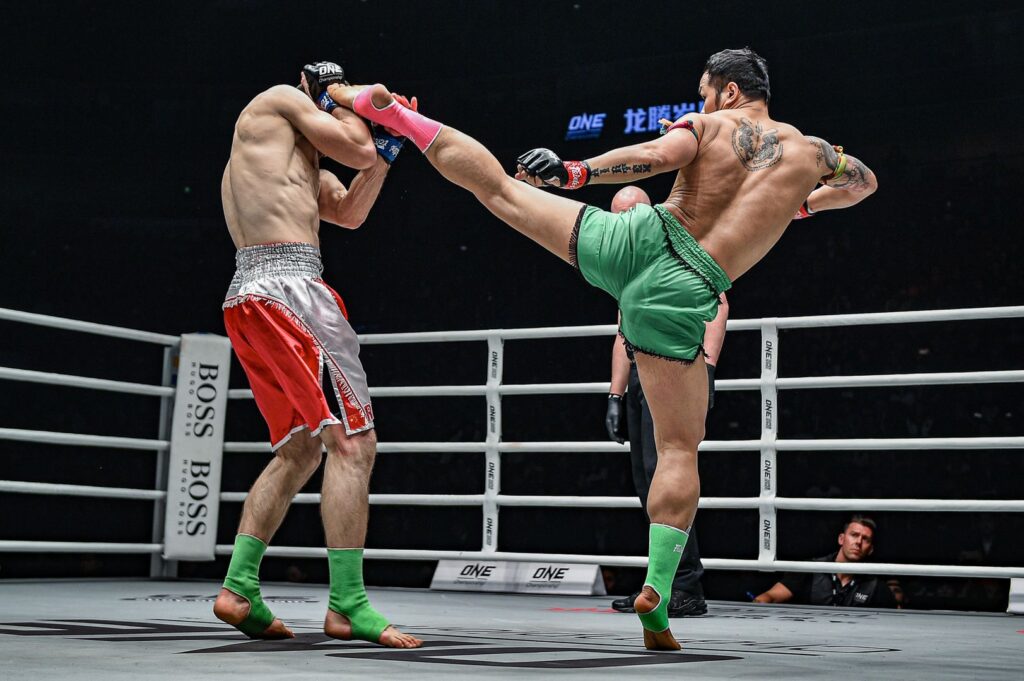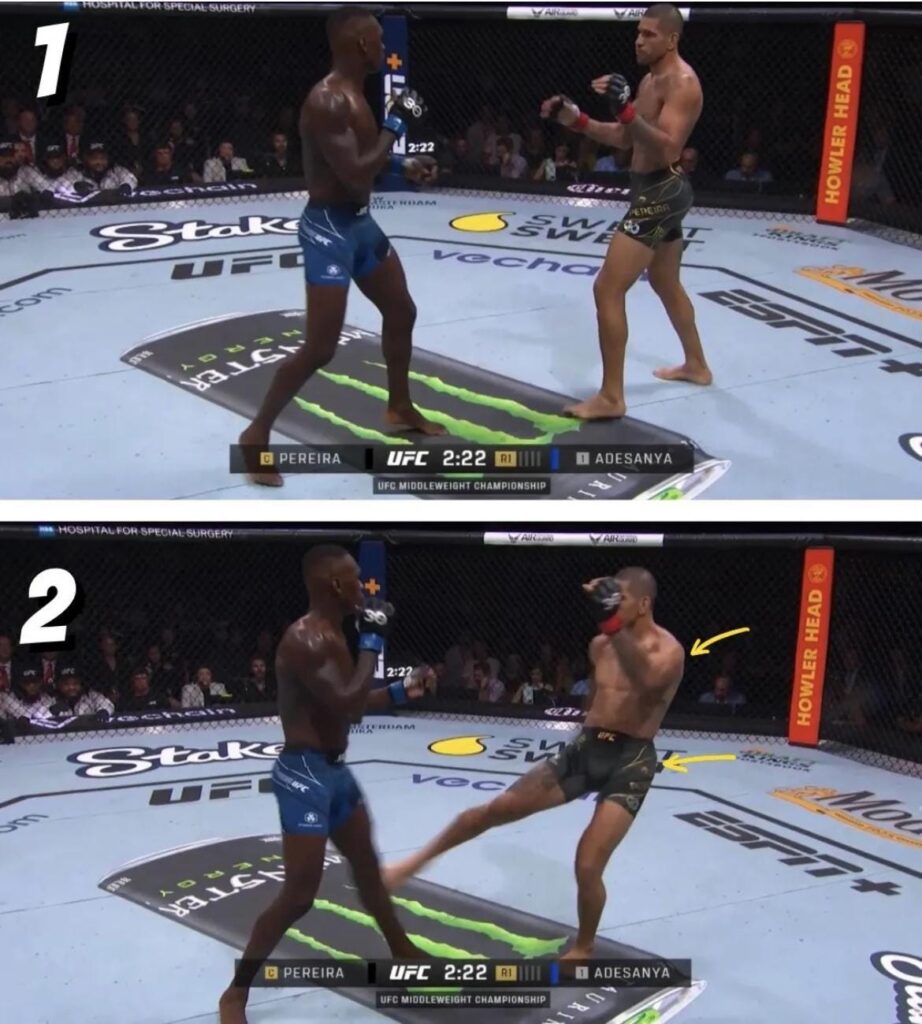Recently, a hot topic in the world of martial arts has been whether or not to turn the base leg when delivering kicks. As the sport of MMA evolves, so do the techniques and methods employed by fighters. The success of fighters like Alex Pereira, who often use leg kicks with minimal or no base leg rotation, has many reconsidering their technique. Here, we break down the pros and cons of rotating or not rotating on the kick.
Advantages of Rotating the Base Leg When Kicking 
- Power Generation: Turning your base leg allows you to rotate your hips more effectively, which is crucial for generating power in your kick. The rotation helps transfer the force from your core and hips into the kick, making it more impactful.
- Balance and Stability: Properly turning your base leg helps maintain balance and stability throughout the kick. It ensures that your body is aligned correctly, reducing the risk of losing balance or falling over.
- Reach and Flexibility: Turning your base leg can increase the reach of your kick. By pivoting on your base foot, you can extend your kicking leg further, potentially reaching your target more effectively.
- Reducing Injury Risk: Proper technique, including turning your base leg, can reduce the risk of injuries. When your base leg turns, it allows your body to move more naturally, reducing strain on your joints, particularly your knees and ankles.
- Speed and Efficiency: Turning your base leg can make your kicks faster and more efficient. The pivot allows for a smoother and quicker motion, making it harder for your opponent to anticipate and counter your kick.
How to Execute a Kick Using Proper Rotation of the Base Leg
- Step and Pivot: As you prepare to throw the kick, step slightly off-center with your base leg and pivot on the ball of your foot. Your heel should turn outward.
- Rotate Your Hips: As you pivot, rotate your hips toward the target. This rotation is key to generating power.
- Chamber the Kick: Bring your kicking leg up and chamber it (bend the knee) before extending it toward the target.
- Extend and Follow Through: Extend your leg, making contact with your shin (not your foot) to the target. Follow through with the kick, allowing your body to continue rotating for maximum impact.
- Recoil and Reset: After the kick, recoil your leg back and reset your stance quickly to be ready for the next move.
By incorporating these steps and turning your base leg, you’ll be able to deliver more powerful, accurate, and efficient leg kicks while maintaining proper form and minimizing the risk of injury.
Advantages of Not Turning the Base Leg When Kicking 
- Quicker Recovery: Not turning the base leg can lead to a faster recovery time after the kick. This can be beneficial in situations where you need to maintain mobility and quickly return to a defensive position.
- Deception and Variation: Keeping the base leg stationary can sometimes be used as a deceptive tactic. Opponents who are accustomed to seeing the base leg turn might be less prepared for a kick delivered without this movement, potentially catching them off guard.
- Reduced Telegraphing: A stationary base leg can reduce the telegraphing of the kick. This means the kick may be less obvious to an opponent, making it harder for them to anticipate and counter.
- Speed and Surprise: In some cases, not turning the base leg can allow for a quicker and more surprising delivery of the kick. The less pronounced movement might make it faster to execute.
- Specific Techniques or Situations: Certain martial arts techniques or specific situational strategies may call for a non-rotational kick. For example, in some forms of karate or traditional martial arts, kicks are often delivered with less emphasis on hip rotation.
- Targeting Different Angles: In some cases, not turning the base leg can help in targeting different angles or executing low kicks that don’t require as much power but are aimed at off-balancing the opponent or attacking sensitive areas like the knees.
While these advantages exist, it’s important to note that the lack of base leg rotation typically results in reduced power and potentially less stability. This approach is usually more situational and should be practiced with an understanding of its limitations and appropriate contexts. Fighters often incorporate both techniques into their arsenal, using the rotational kick for power and the non-rotational kick for speed and surprise.
Overall, the choice of whether to turn the base leg or not should be based on the specific goals of the kick, the fighting style, and the situation at hand.
Thanks for reading. If you would like to start or further your martial arts journey and live in Portland, Oregon, give us a call at 503-235-3435 and come check out our community of like-minded individuals seeking greater personal development!



